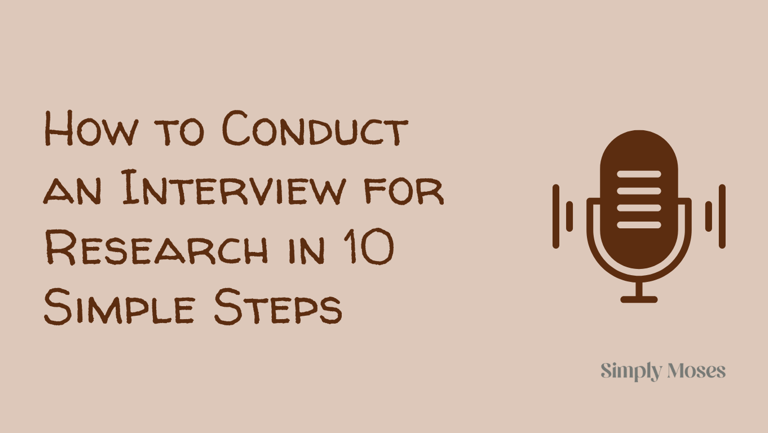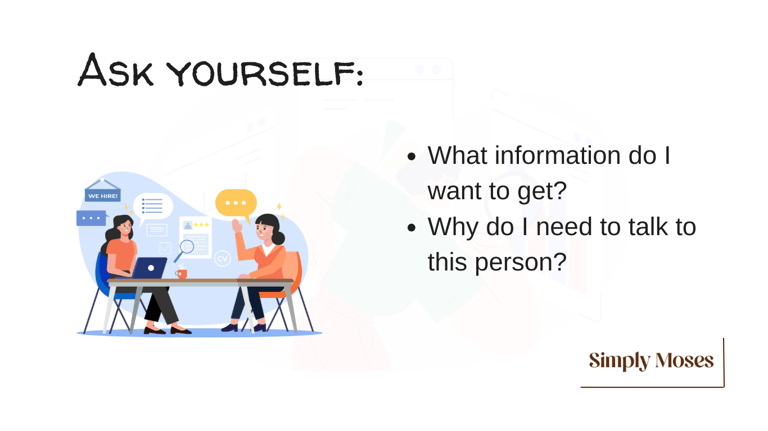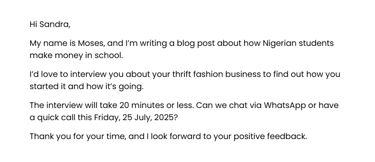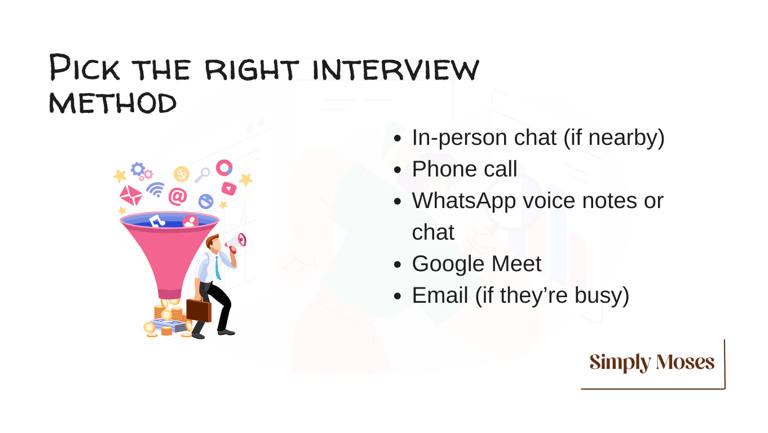🛑 Stop Guessing & Take Action Today!—Limited seats to ensure personalised attention! 👉 Learn More.
How to Conduct an Interview for Research in 10 Simple Steps (A Guide for Beginners)
Learn how to conduct effective research interviews in 10 simple steps. Get original insights and strengthen your content with this guide for beginners.
By Moses Attamah
7/24/20255 min read


This guide has simplified the process of conducting successful research interviews.
It will help you gather original insights for any form of content writing in just 10 practical steps.
If you’re just a beginner, you’re in the right place.
How to conduct a good interview for research step by step
Here’s a simple, step-by-step guide to conduct an interview for research when writing an article or blog post (with relatable examples):
Know why you’re conducting the interview.
Choose the right person to interview.
Reach out politely.
Get your questions ready.
Pick the right interview method.
Start the interview with warmth.
Listen well and ask follow-up questions.
Thank them and ask for permission.
Review and organise your notes.
Use the interview in your writing.
Step 1: Know why you’re conducting the interview.
The first step to conducting a research interview is to find out exactly why you’re conducting the interview.
To do that, ask yourself:
What information do I want to get?
Why do I need to talk to this person?
Example:
You're writing a blog post on “How Nigerian Undergraduate Students Make Money in School.”
From this topic, it’s clear that the information you want to get is how Nigerian students make money in school.
Keep this example in mind because I’ll use it for all the steps in this guide.


Step 2: Choose the right person to interview.
See:
You won’t just pick anyone to interview.
So, look for someone who:
Has real experience with the topic you’re writing on.
Can give accurate and useful stories, examples, or facts.
Is available and willing to share their knowledge or experiences.
Example:
You can pick a 300-level UNIBEN student who makes money by selling thrift clothes on Instagram.
This will help you understand how they began, their challenges, and their current status.
You can find and meet experts or industry professionals to interview on:
Social media
Niche communities/forums
Or in person.
Subscribe to my newsletter!
Step 3: Reach out politely.
Remember, you need the information from the interview with this person.
(You’re not doing them a favour by contacting them.)
So, ask for the interview with respect and clarity, using the steps below:
Salute the person.
Introduce yourself and what you do.
Ask for the interview.
State the time it could take.
Suggest where and when the interview can happen.
Thank them for their time and in advance of their acceptance.
Below is a sample message:


See? The short message is clear and respectful.
And if they say yes, the next step is to prepare for the interview.
Step 4: Get your questions ready.
Once they accept your request, get your questions ready.
Write 7–10 focused questions and make sure they:
Are clear and easy to answer.
Go from general to specific.
Allow your interviewee to share stories and personal experiences.
Example questions:
What do you do, and how did you start?
Why did you choose this side hustle?
What challenges do you face as a student entrepreneur?
How much time do you spend on it weekly?
How do you combine it with your studies?
What’s one lesson you’ve learned from this that other students should know?
Step 5: Pick the right interview method.
There are so many options when it comes to the interview method to use.
However, choose what works best for you and the person.
The options include:
In-person chat (if nearby)
Phone call
WhatsApp voice notes or chat
Google Meet
Email (if they’re busy)
Before the interview, ask if you can record (with permission) or take notes.
If you have to record, ensure your recording devices are functional.
You don’t want to complete the interview and discover you couldn’t record anything.


Step 6: Start the interview with warmth.
This step is simple.
It’s all about creating a comfortable environment for the conversation.
So, begin with a friendly greeting to make the person relax.
Example:
“Thanks again for this opportunity to chat with you, Sandra. I’m excited to hear your story. There’s no pressure, so just feel free to answer as you like. Let’s start with what inspired your business…”
You can even tell the person to use any language they’re most comfortable with.
Whether it’s English, Pidgin, or any of the native languages, the most important thing is to get the message.
You can translate it later.
Step 7: Listen well and ask follow-up questions.
While the interview is going on, pay attention to what they say.
If something is interesting or unclear, you can ask further questions about that.
Example:
“You said you started with just N3,000. That’s really interesting. How did you manage to get your first set of items with that little amount?”
Meanwhile, don’t stick too strictly to your scripted questions.
Let the conversation flow naturally.
Step 8: Thank them and ask for permission.
After the interview, thank them again for their time.
Also, ask for their permission on what aspects of the interview responses you can or can’t include in your article or blog post.
Why do you need to ask for permission?
Sometimes, the person might have shared some personal information during the interview.
Such information includes:
Their legal name and business
The amount of money they make from the business
Their relationship status.
So, it’s wise to ask if it’s okay to include the information in your writing.
You can also ask for a photo or quote if needed.
Example:
“Can I include your name and business handle in the article? Also, would you like me to send you a link when the post goes live?”
Subscribe to my newsletter!
Step 9: Review and organise your notes.
Great job!
Now that you’ve completed the interview,
Listen to your recording or read your notes.
Pull out the most useful quotes, facts, and stories.
Group them by topic so it’s easy to add them to your article.
Then get started with your writing.
Step 10: Use the interview in your writing.
As you write your article or blog post, cite the interview in your content.
This means using short, strong quotes or summarising what the person said in your own words.
(This doesn’t mean you should make things up.)
Example in your article:
“Sandra, a student at UNIBEN who runs a small thrift business, started her business with just N3,000. ‘I used my phone to record the items and posted 3-4 times daily. That’s how I got my first 10 customers,’ she said.”
For each quote, remember to provide context.
From the example above, you can see that the context is how she got her first customers.
Bottom line
Learning how to conduct research interviews will elevate your writing.
By taking these 10 steps, you’ll gather unique perspectives and create stronger, more effective content.
Start using interviews in your research process today to enrich your writing.
Interview for research FAQs
1. What is a research interview?
A research interview is a qualitative research method that involves a one-on-one conversation between a researcher and a participant.
The researcher is the interviewer, while the participant is the interviewee.
The main goal of a research interview is to understand the "why" and "how" behind phenomena, rather than just the "what."
2. Why use interviews as a research method?
Interviews are designed to gather original information and insights about the participant's experiences, perspectives, and opinions on a particular topic.
When you use information from the interviews, your content will be much stronger than if you just rewrite tips from AI or other blogs.
